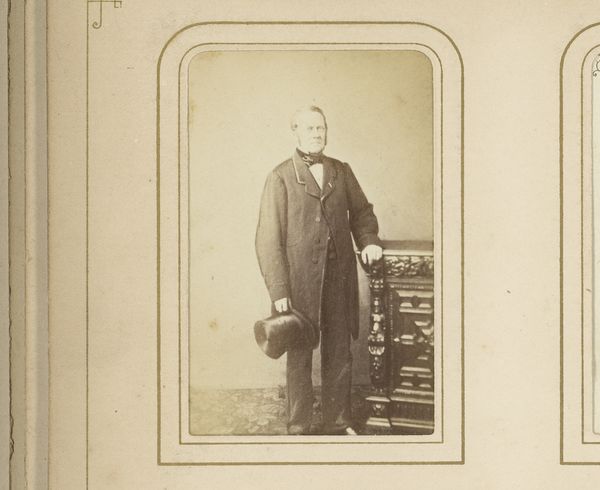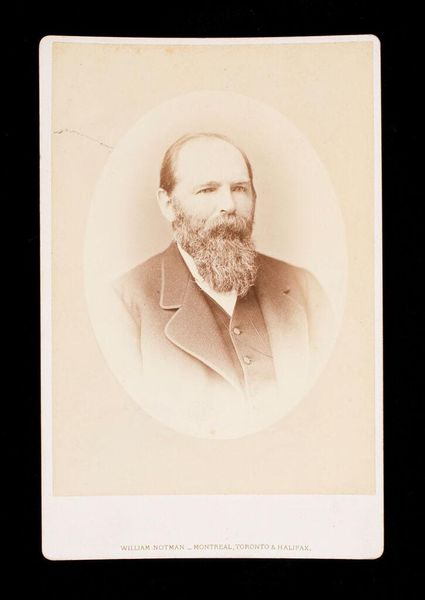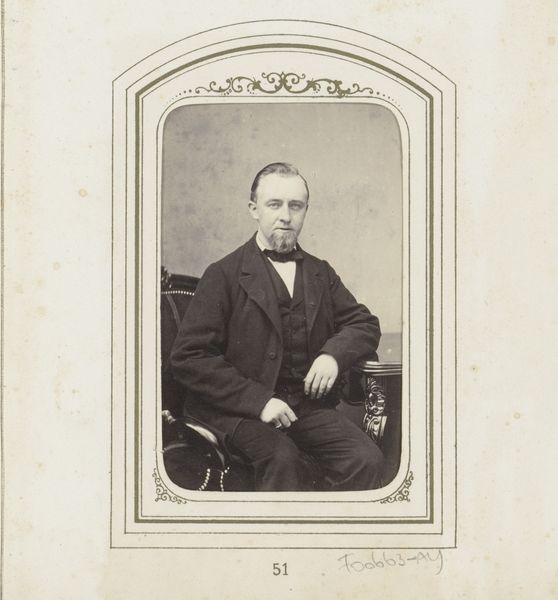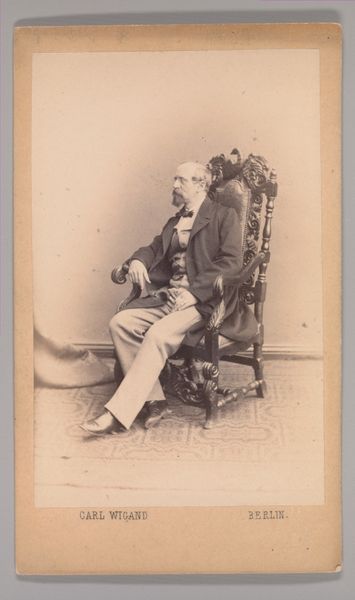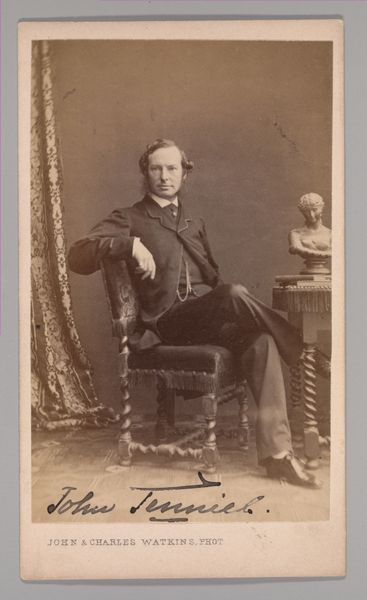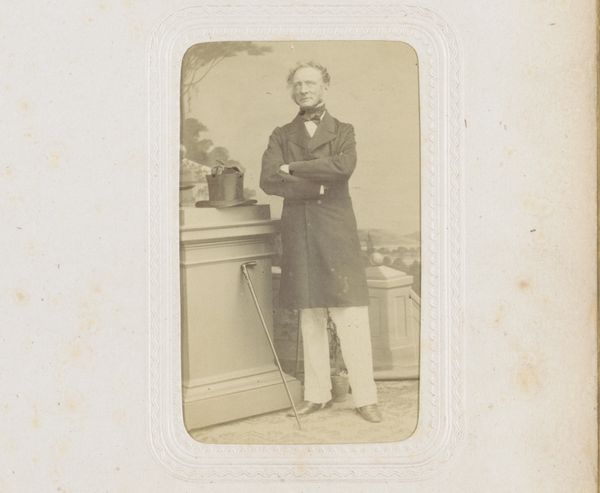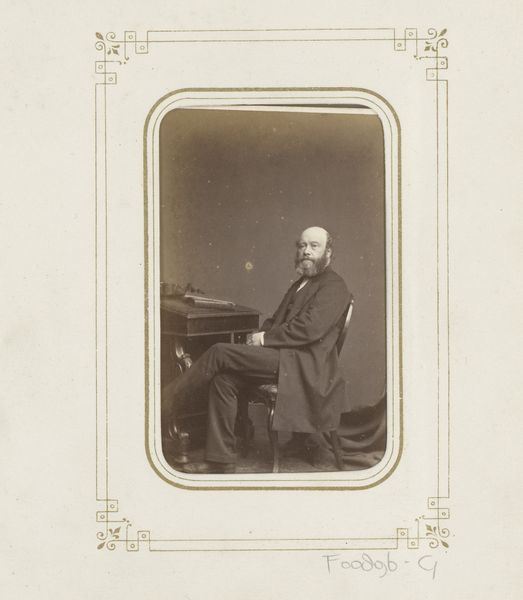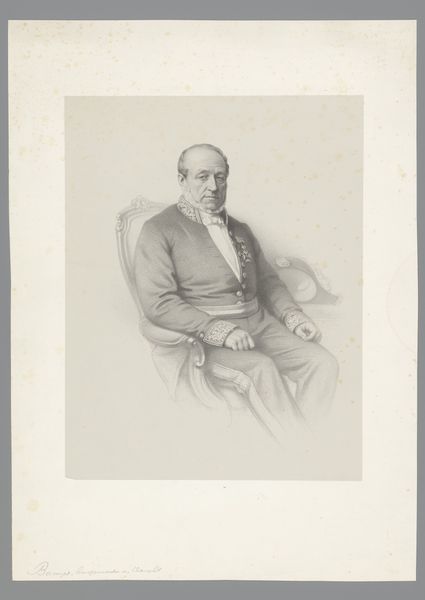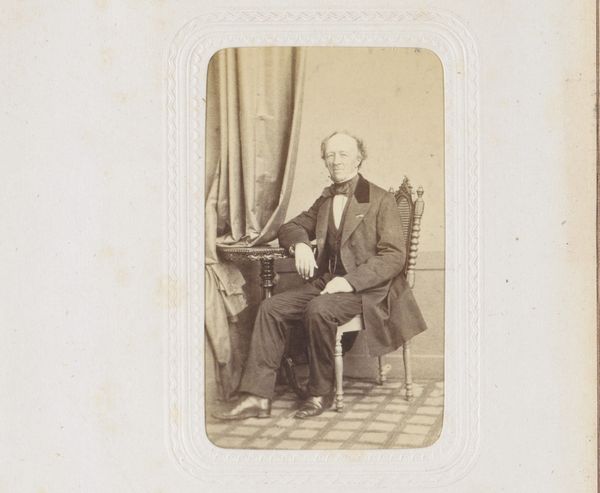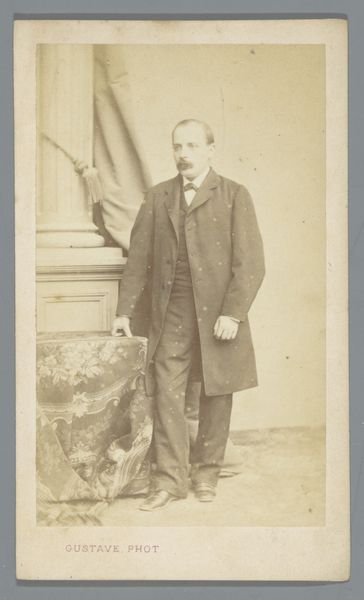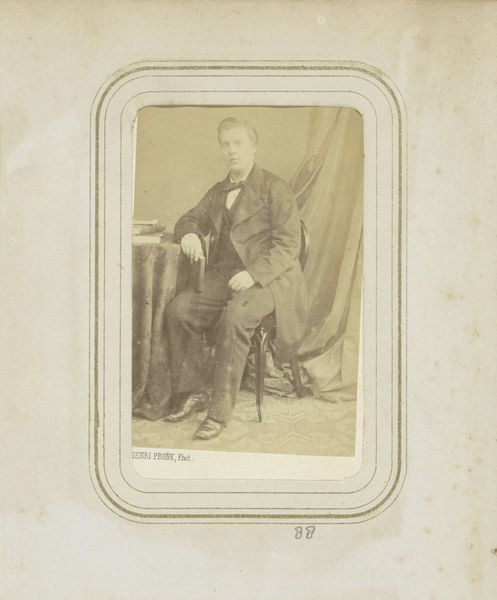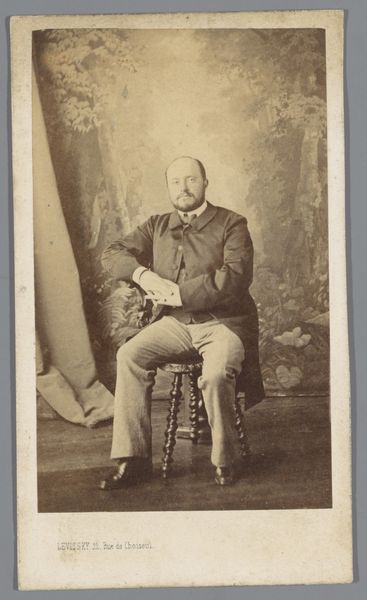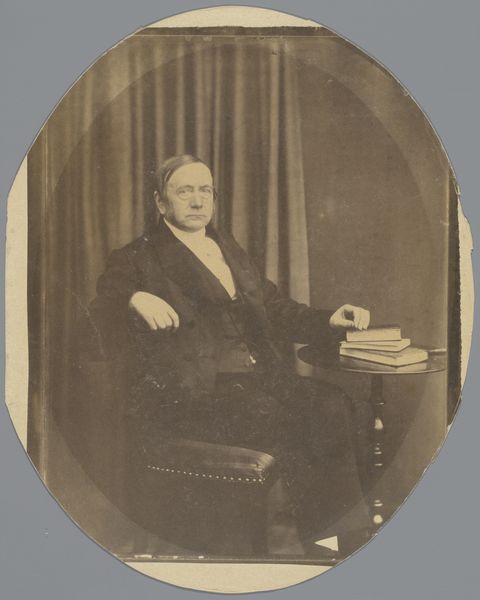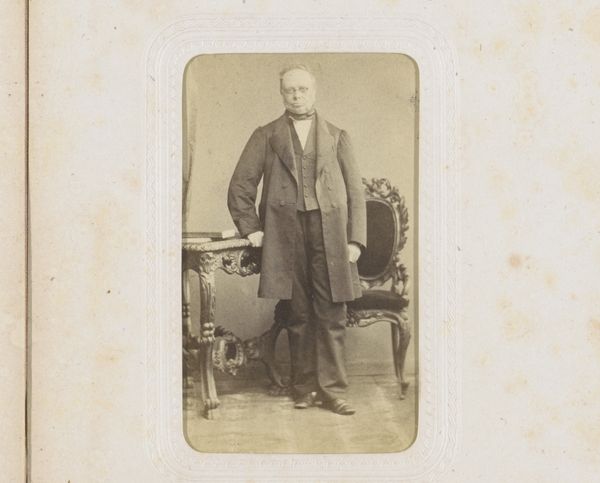
photography, gelatin-silver-print
#
photography
#
historical photography
#
gelatin-silver-print
#
genre-painting
Dimensions: height 133 mm, width 96 mm
Copyright: Rijks Museum: Open Domain
Editor: This gelatin-silver print, "Portret van een zittende man," made sometime between 1880 and 1920, strikes me as incredibly formal. The sitter appears staged, even stoic. What can you tell me about its context? Curator: This portrait really speaks to the burgeoning middle class and the rise of photography as a means of social mobility and representation. What do you notice about his pose, his attire, the props surrounding him? Editor: He seems consciously composed. The suit, the book, even the plant on the table suggest wealth and perhaps intellectual pursuits. Curator: Exactly. These elements were carefully chosen to convey a certain image, signaling status in a rapidly changing society. Think about who had access to photography at the time, and what messages they wanted to project. What’s absent is almost as important as what is present. Editor: So, it’s less about a genuine reflection and more about constructing a desired public persona? It feels like he is crafting an ideal for himself. Curator: Precisely. The photographer and sitter collaborate to produce this representation, reflecting societal aspirations. Editor: I hadn’t considered the performative aspect of early portrait photography so explicitly. Curator: These images were critical in negotiating social identity during a transformative era. Studying them opens a window onto the power dynamics of visual representation and public image-making in modern society. Editor: That is so thought provoking! I'll never see old photographs the same way again.
Comments
No comments
Be the first to comment and join the conversation on the ultimate creative platform.
